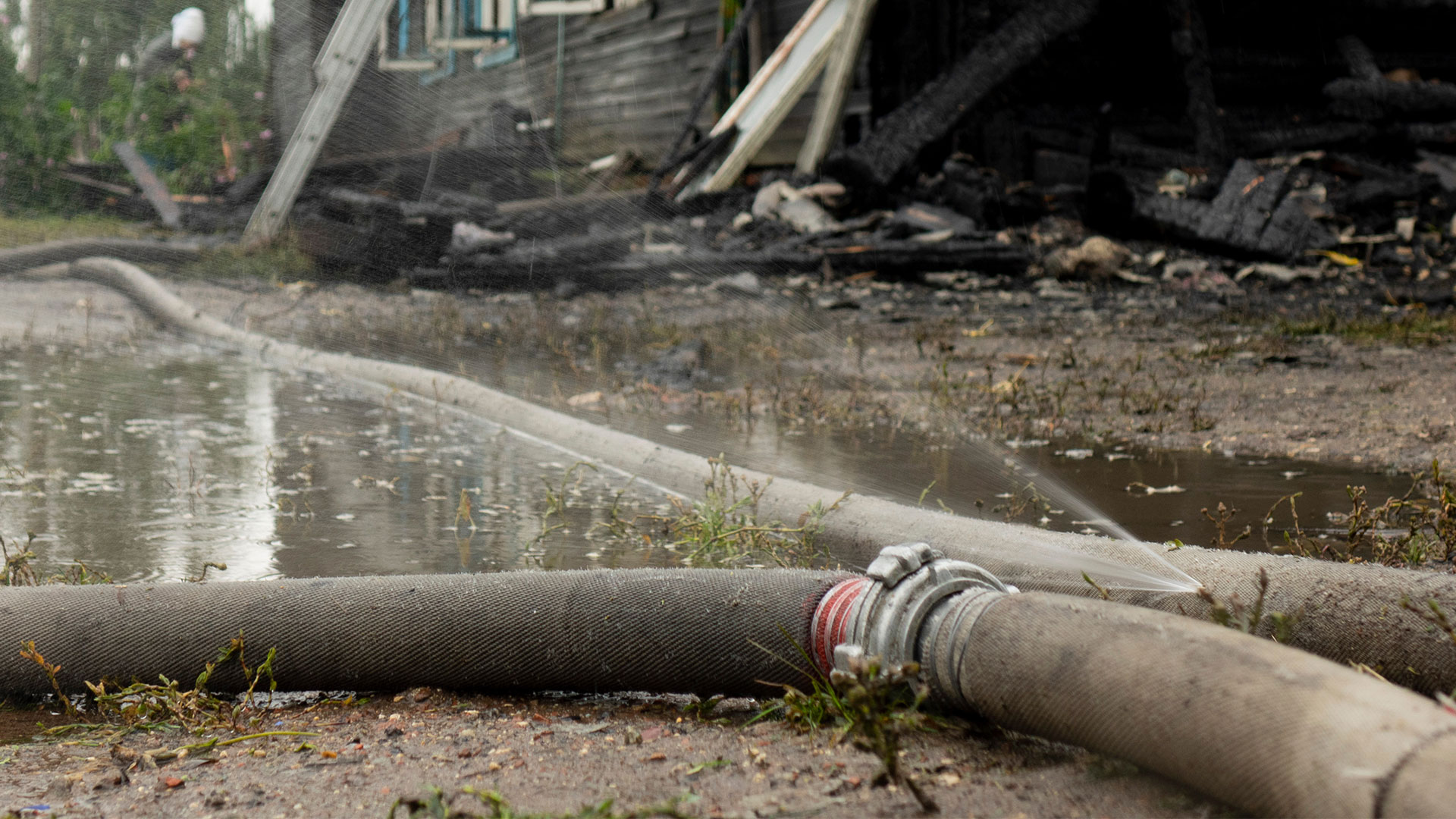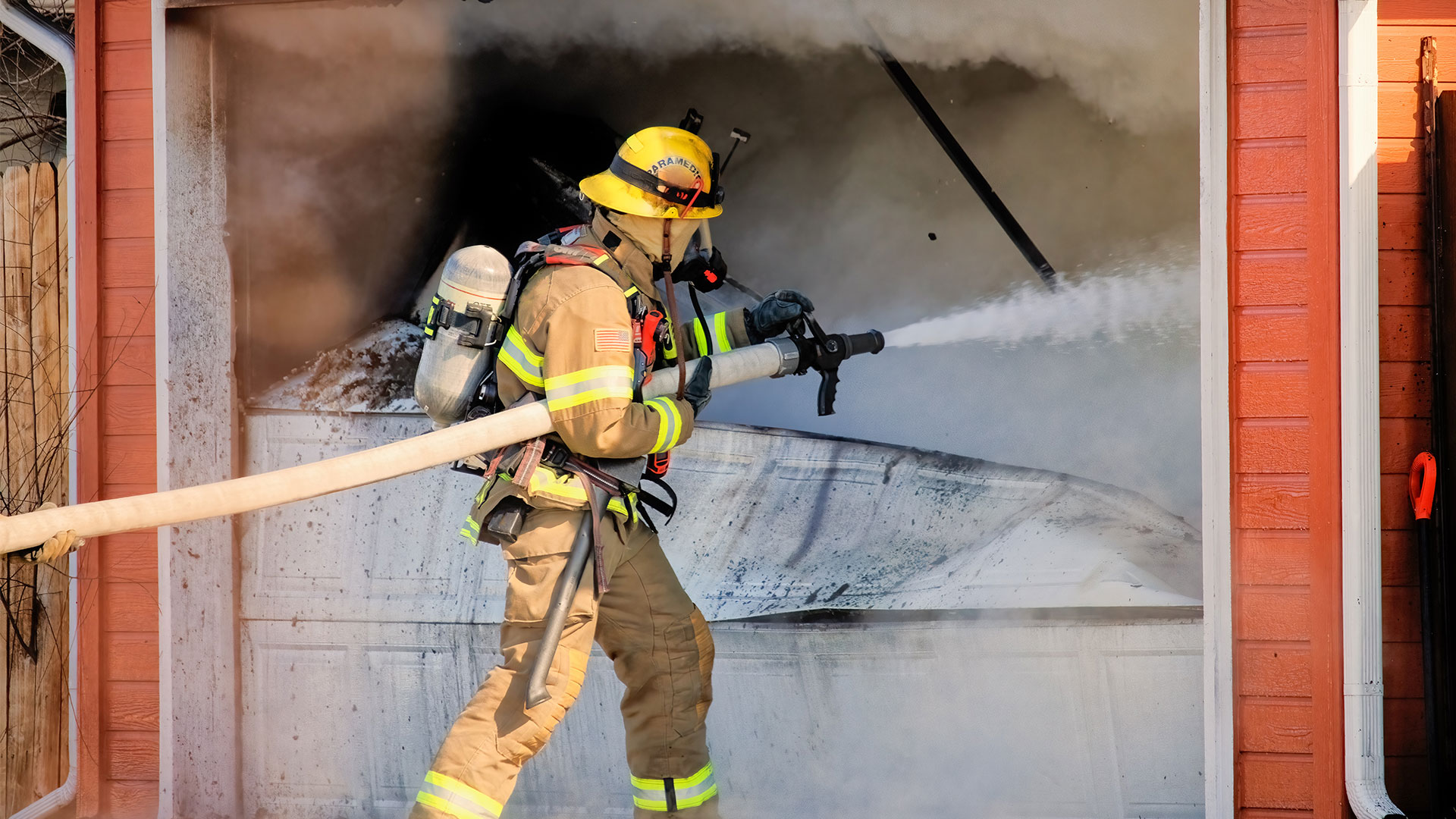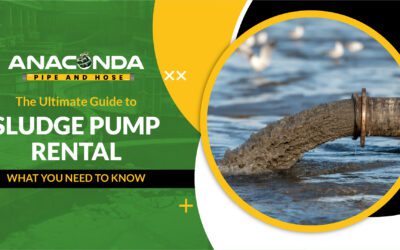Flat hoses are integral to many industrial operations, providing a versatile, efficient, and durable solution for fluid transfer. From agriculture to mining, they play a crucial role in ensuring smooth workflows. However, not all flat hoses are created equal. Choosing the right flat hose for your specific industrial needs requires a comprehensive understanding of your application, environmental conditions, and operational requirements.

What Are Flat Hoses?
Flat hoses are specialized pipes designed to lie flat when not in use, making them highly portable and easy to store. Unlike traditional hoses, flat hoses expand to a circular shape during operation and return to their flat configuration when pressure is released.
Key Features of Flat Hose
- Material Composition: Commonly made from PVC, rubber, or polyurethane, the flat hose is designed to balance flexibility and durability.
- Compact Design: Their flat form allows for convenient storage and transport.
- Versatility: Suitable for a variety of industrial applications, including water transfer, firefighting, and chemical transport.
Common Industrial Applications
- Agriculture: For irrigation and water distribution.
- Mining: Used in dewatering and slurry management.
- Firefighting: High-pressure flat discharge hose for rapid water delivery.
- Chemical Plants: To handle corrosive or hazardous fluids.
The flat hose is indispensable across industries, making their proper selection crucial for operational efficiency.
Understanding Industrial Requirements
Selecting the right flat hose depends on your specific industrial needs, as each factor impacts performance and durability:
- Pressure Rating: Ensure the hose’s PSI matches your operation’s demands to prevent ruptures and downtime.
- Temperature Range: Choose materials suited for the operating environment, such as rubber for flexibility in extreme cold.
- Chemical Resistance: Use hoses made from resistant materials for transporting hazardous fluids to avoid corrosion.
- Abrasion Resistance: Opt for a durable flat discharge hose in rugged settings like construction or mining to minimize wear.
Types of Flat Hose: A Detailed Exploration
A flat hose is a versatile tool, and its efficiency lies in selecting the right type for your specific application. Let’s delve deeper into the characteristics, applications, benefits, and limitations of the most common types of flat hose to help you make an informed choice.
Lay flat Hose
Lay flat hose is among the most commonly used flat hoses, prized for its lightweight and highly flexible design.
Key Features
- Constructed from materials like PVC or lightweight rubber.
- Designed to be rolled up flat when not in use for easy storage and transport.
- Flexible enough to be deployed quickly, even in tight or challenging spaces.
Applications
- Water Transfer: Ideal for pumping water over long distances in agriculture or construction.
- Irrigation: Commonly used in farming to distribute water across large fields.
Advantages
- Cost-Effective: Affordable option for low- to moderate-pressure applications.
- Portability: Lightweight design allows for effortless handling and storage.
- Ease of Use: Quick deployment and roll-up make it a practical choice for frequent use.
Limitations
- Low-Pressure Capacity: Not suitable for high-pressure environments.
- Durability: It may wear out faster in harsh or abrasive conditions compared to heavy-duty hoses.
Lay flat hose is an excellent choice for tasks requiring flexibility and mobility, especially in applications like irrigation and temporary water transfer.
Heavy-Duty Flat Hose
Heavy-duty flat hose is built for robustness and durability, making them ideal for demanding industrial environments.
Key Features
- Thicker walls are reinforced with high-grade rubber, polyurethane, or fabric.
- Designed to withstand significant wear and tear, as well as harsh environmental conditions.
Applications
- Mining Operations: Used to transfer slurry or dewater flooded areas.
- Industrial Dewatering: Suitable for pumping out water from construction sites or flooded zones.
- Construction: Commonly used in rugged sites for fluid transfer.
Advantages
- High-Pressure Capacity: Withstands substantial water pressure without risk of rupture.
- Durability: Resilient against abrasions, impacts, and harsh chemicals.
- Versatility: Performs well in challenging environments, such as extreme heat or cold.
Limitations
- Weight: Heavier than standard lay flat hose, which can make handling more cumbersome.
- Cost: More expensive due to their reinforced construction and durability.
If your operation involves harsh conditions, such as in mining or construction, heavy-duty flat hose is a reliable solution that offers long-lasting performance.
Fire Hoses
Fire hoses are designed specifically for emergency services, where reliability and performance are critical.
Key Features
- Constructed from a blend of rubber, synthetic fibers, and durable outer coatings.
- Engineered for extremely high water pressure and rapid delivery.
Applications
- Firefighting: Essential for transporting water or foam to extinguish fires.
- Emergency Services: Used in disaster management scenarios for water delivery.
Advantages
- High Durability: Resistant to extreme pressure and heat.
- Efficient Performance: Designed to deliver large volumes of water quickly.
- Reinforced Construction: Capable of withstanding high wear and environmental stress.
Limitations
- Expense: High-performance materials and specialized design make these hoses costly.
- Specific Use Case: Limited versatility outside of firefighting or high-pressure applications.
Fire hoses are indispensable in emergency scenarios where performance under pressure is non-negotiable.
Chemical-Resistant Flat Hoses
Chemical-resistant flat hose is specialized for handling corrosive or hazardous materials, offering enhanced protection and durability.
Key Features
- Made from chemical-resistant materials like reinforced rubber, polyurethane, or special coatings.
- Engineered to resist degradation from exposure to chemicals, acids, and solvents.
Applications
- Chemical Plants: Used for transferring hazardous chemicals or waste materials.
- Industrial Cleaning: Suitable for applications involving aggressive cleaning agents.
- Food and Beverage: Often employed for handling specific fluids safely.
Advantages
- Corrosion Resistance: Withstands contact with harsh chemicals without compromising integrity.
- Safety: Reduces the risk of leaks or spills in hazardous environments.
- Durability: Retains structural integrity under prolonged exposure to corrosive substances.
Limitations
- Rigidity: Often less flexible than standard hoses, which can make handling more challenging.
- Cost: Higher price due to the use of specialized materials and design.
Chemical-resistant flat hose is essential for industries dealing with corrosive substances, ensuring safe and efficient fluid transfer.
Choosing the Right Flat Hose
Selecting the appropriate flat hose involves assessing the demands of your specific operation:
- Pressure Requirements: Heavy-duty or fire hoses are better suited for high-pressure environments.
- Fluid Type: Chemical-resistant hoses are necessary for hazardous or corrosive materials.
- Durability Needs: Heavy-duty hoses offer enhanced resilience for abrasive conditions.
- Application Type: Lay flat hose excel in lightweight and flexible applications like irrigation.
By understanding the characteristics, advantages, and limitations of each type, you can choose a flat discharge hose that ensures optimal performance and meets your operational requirements without compromising safety or efficiency.
Key Features to Look for in a Flat Hose
When selecting a flat hose, consider the following features to ensure optimal performance and longevity:
1. Durability
The material composition determines the hose’s resistance to wear, pressure, and environmental factors. Rubber and polyurethane hoses typically offer superior durability.
2. Flexibility
Hoses that are easy to bend and maneuver are crucial for applications requiring frequent movement or repositioning.
3. Portability
Lay flat hose is valued for its compact design. Opt for lightweight options if portability is a priority.
4. Inner Diameter and Flow Rate
The inner diameter of the hose directly impacts the flow rate. Ensure the hose size aligns with your fluid transfer needs.
5. Couplings and Fittings
Compatibility with existing equipment is essential. Check for sturdy and leak-proof couplings that fit your application.
Selecting a hose with the right features minimizes operational issues and enhances productivity.
Maintenance and Longevity of Flat Hoses
Proper maintenance extends the lifespan of flat hose and ensures consistent performance.
Cleaning and Storage
- Cleaning: Rinse the hose after each use, especially if used with chemicals or abrasive materials.
- Drying: Allow the hose to dry completely before storage to prevent mold or material degradation.
- Storage: Store in a cool, dry place away from direct sunlight to avoid UV damage.
Tips for Longevity
- Avoid dragging hoses over sharp surfaces to minimize wear.
- Regularly inspect for cracks, leaks, or weak spots.
- Replace damaged couplings promptly.
Signs of Wear and Tear
- Visible cracks or abrasions.
- Reduced flexibility or stiffness.
- Leaks or inconsistent flow rates.
Implementing these practices ensures your flat hose remains in optimal condition for years.
Cost vs. Performance: Finding the Right Balance When Purchasing a Flat Hose
When it comes to selecting a flat hose, the cost is often a significant factor in the decision-making process. However, focusing solely on the initial price with consideration of performance and long-term value can lead to higher expenses over time. Balancing cost and performance ensures that you invest in a hose that meets your operational needs while offering durability and efficiency.
Budget Considerations
Low-Cost Options
- Characteristics: Low-cost flat hose is typically made from lightweight materials like basic PVC, which keeps the price down. These are best suited for applications with minimal demands.
- Applications: Ideal for light-duty tasks, such as occasional water transfer or irrigation in non-abrasive environments.
- Pros:
- Affordable, upfront cost.
- Easy to replace if damaged.
- Cons:
- Lower durability and pressure handling capacity.
- Susceptible to wear and tear in demanding conditions.
- Shorter lifespan, which could lead to frequent replacements.
Premium Options
- Characteristics: Premium flat hose is built with reinforced materials such as polyurethane or synthetic rubber, designed to handle heavy-duty applications.
- Applications: Essential for operations involving high pressures, abrasive materials, or exposure to harsh chemicals.
- Pros:
- Longer lifespan and superior durability.
- Better resistance to extreme conditions, such as high temperatures or corrosive chemicals.
- Reduced risk of downtime due to hose failure.
- Cons:
- Higher upfront cost.
- It may seem excessive for basic or low-intensity applications.
Long-Term Value
Investing in a high-quality flat discharge hose can lead to significant savings over time, even if the initial cost is higher. Here’s how:
- Reduced Maintenance Costs:
- Premium hoses are less likely to crack, leak, or degrade quickly, reducing the need for frequent repairs or replacements.
- They require less maintenance, saving both time and money.
- Increased Efficiency:
- A durable hose maintains consistent performance, preventing interruptions caused by malfunctions or breakdowns.
- Reliable flow rates and pressure handling improve operational efficiency.
- Enhanced Safety:
- High-quality hoses are better equipped to handle hazardous materials or extreme conditions, minimizing the risk of accidents or environmental contamination.
- Fewer Replacements:
- While low-cost hoses might require multiple replacements within a short period, a premium hose can last years, making it more cost-effective in the long run.
Avoiding Pitfalls of Low-Quality Options
Opting for a cheaper flat discharge hose might seem economical upfront, but it can lead to significant operational challenges:
- Frequent Failures: Low-quality materials are prone to ruptures, leading to costly downtime.
- Inefficiency: Inconsistent performance can disrupt workflows, especially in industrial settings.
- Higher Replacement Costs: Repeatedly purchasing inexpensive flat discharge hoses can quickly exceed the cost of a single high-quality hose.
Making a Cost-Effective Choice
To balance cost and performance:
- Assess Your Needs:
- For low-pressure and non-intensive tasks, a basic lay flat hose might suffice.
- For high-pressure or chemical-intensive operations, invest in a premium flat discharge hose.
- Consider Total Costs:
- Look beyond the purchase price and evaluate maintenance, repair, and replacement costs over the hose’s lifespan.
- Evaluate Durability:
- Pay attention to the hose’s construction materials, pressure ratings, and resistance to environmental factors.
- Consult Experts:
- Engage with trusted suppliers or manufacturers who can recommend a hose that aligns with your specific requirements.
By factoring in both the immediate costs and the long-term benefits of a flat discharge hose, you can make an informed decision that delivers the best value for your investment. A durable, high-performing flat discharge hose not only reduces downtime and operational inefficiencies but also saves money over time by minimizing replacements and repairs.
Top Flat Hose Brands and Suppliers
Reliable manufacturers provide quality products and support. Some leading flat hose brands include:
- Brand A: Known for heavy-duty and chemical-resistant hoses.
- Brand B: Offers a range of lay flat hose for agricultural and construction needs.
- Brand C: Specializes in fire hoses with high-pressure ratings.
When choosing a supplier, consider:
- Warranty and product guarantees.
- Customer support and technical assistance.
- Product range and customization options.
Partnering with a trusted supplier ensures you get a quality product tailored to your needs.
Conclusion
A lay flat hose is a versatile, essential tool in industrial operations, and selecting the right one requires careful consideration of your specific needs. By understanding the types of flat hose, their features, and maintenance requirements, you can ensure optimal performance and cost-effectiveness.
Take the time to evaluate your industrial requirements, explore reliable brands, and invest in a quality flat discharge hose or lay flat hose that meets your demands. For expert advice and a range of high-performance flat hoses, contact industry professionals today to find the perfect solution for your needs.








0 Comments